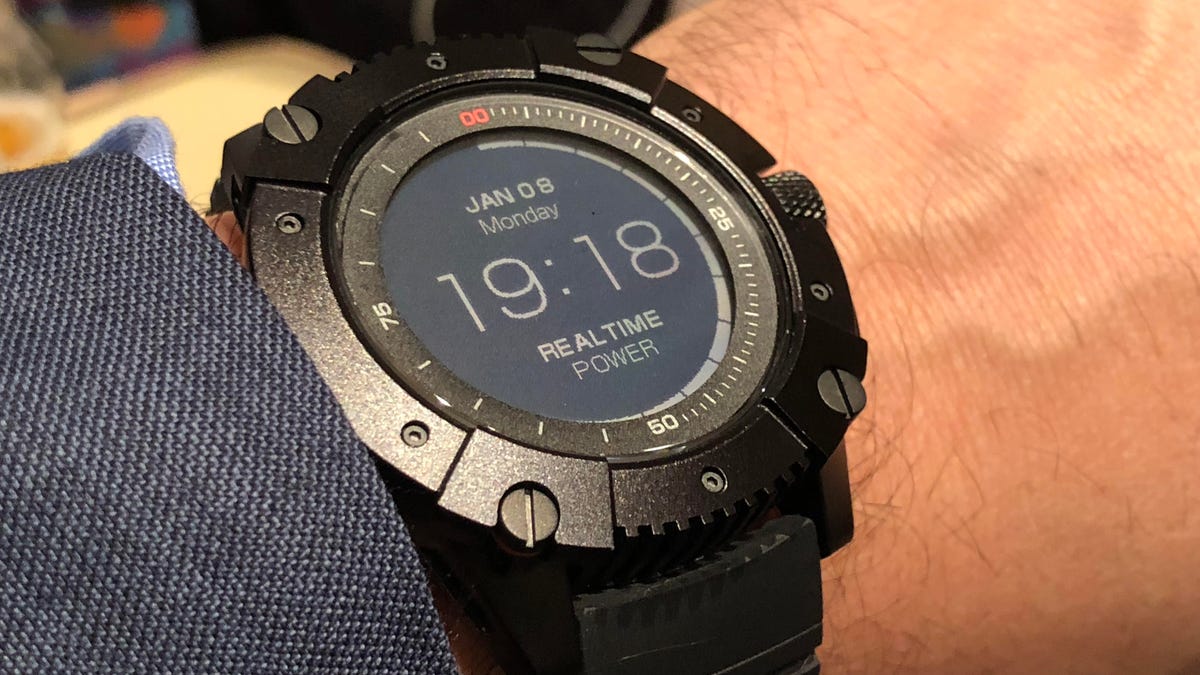Body-heat-powered Matrix PowerWatch X now gets notifications
Can thermal gradients start powering more advanced wearable things? We go hands-on at CES.

It's bulky, but it's completely powered by body heat.
Will we ever be able to power electronics with body heat? Matrix Industries is pushing for it to happen, starting with watches and internet-of-things (IoT) sensors.
I remember being wowed by the idea of the Matrix Industries PowerWatch a year ago. It was one of the wilder ideas I've seen at CES : a perpetually powered fitness watch charged by body heat. The technology -- using thermal gradients and an aluminum case with ridges that act as heat vents -- wasn't able to drive very high-powered functions, so the first watch basically told time and counted steps.
This year, the new Matrix PowerWatch X takes another step forward by adding notifications. It's not a big step, but it makes the new X more like a smartwatch than the previous version. It also measures steps and, like the original model, can do accurate calorie counting (according to Matrix) by measuring the electrical energy that your body expends.
It looks a little like a bulky Casio G-Shock. It was unveiled at CES here in Las Vegas, and I tried one on my wrist. It's big, but it's fascinating. I haven't lived with a PowerWatch on my wrist for days, but the promise of at least one device that no longer needs charging sounds good to me.
Will thermal gradient-driven charging help power higher-end smartwatches, or phones or wireless earbuds? Maybe not right now. But the founders of Matrix Industries have dreams of thermal gradients powering small IoT sensors next. Two test devices I peeked at show how this could work: one, a device that's meant to sit in an air-conditioning vent, uses the thermal gradient to power a small sensor.
Testing a small IoT beacon powered by body temperature. Those gear-like metal edges act like a heat sink.
Another demo shows how small Bluetooth-powered beacons could activate at a single finger touch, sending enough power to take a local air temperature and humidity reading. In places with lots of beacons and sensors, this promises an ability to power a low-power grid with no battery replacements.
The PowerWatch X is water-resistant to 200 meters, and can last two years on standby between wrist recharges without losing data -- and now it gets phone notifications, too.
It costs $249 to preorder (last year's PowerWatch was $199). We don't have international availability information yet, but that price converts to about £185 or AU$315.
Phones of CES: All the phone news from Las Vegas in one place.
Update, Jan. 16: Added hands-on impressions to this story, which was previously published on Jan. 8.

